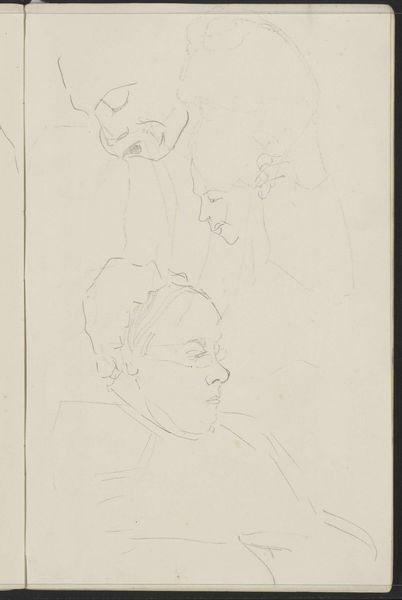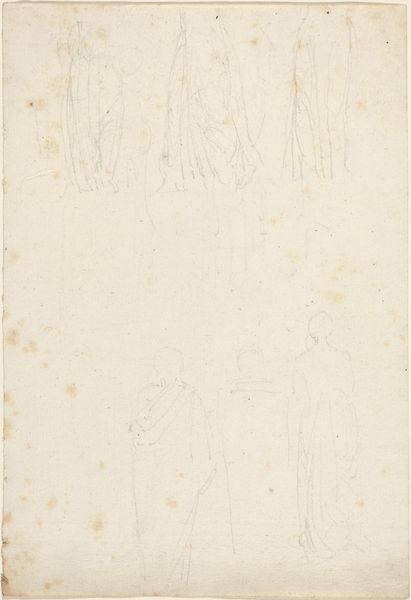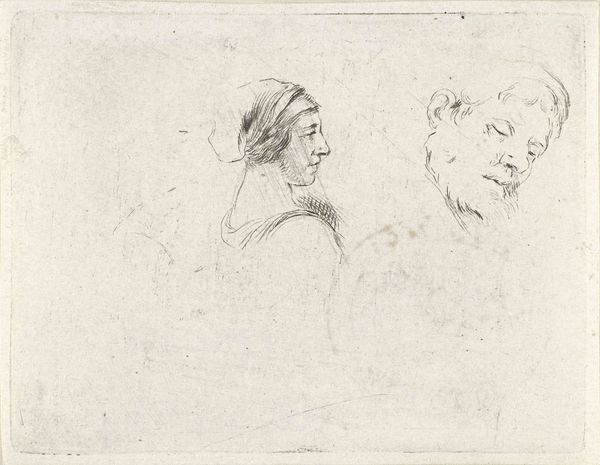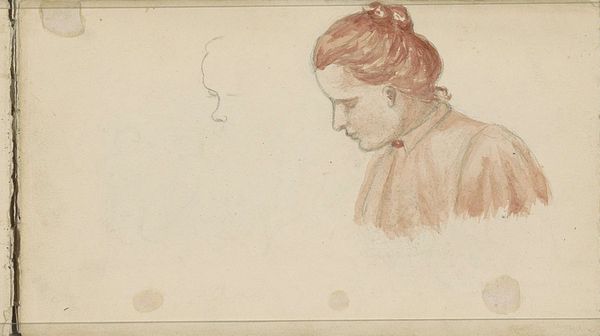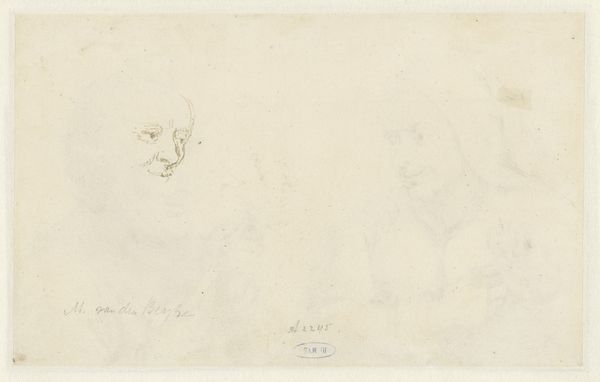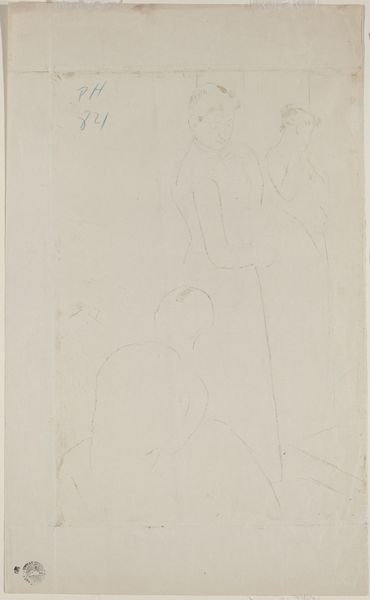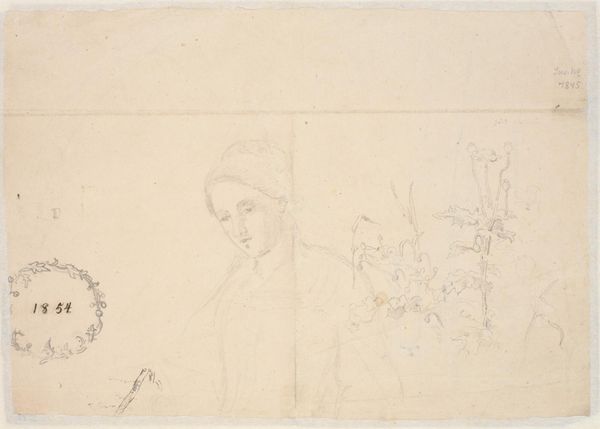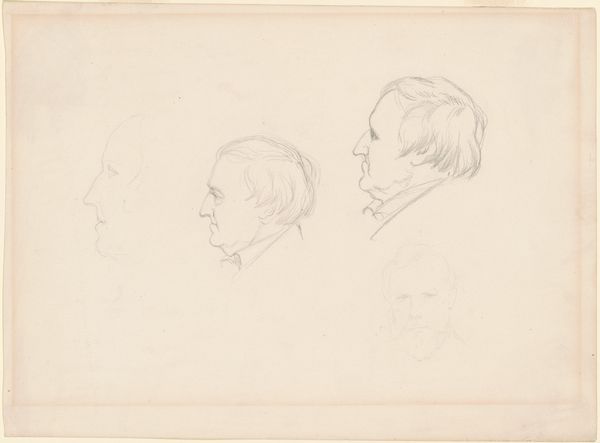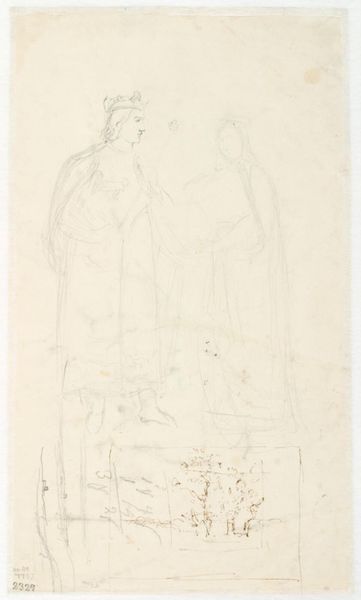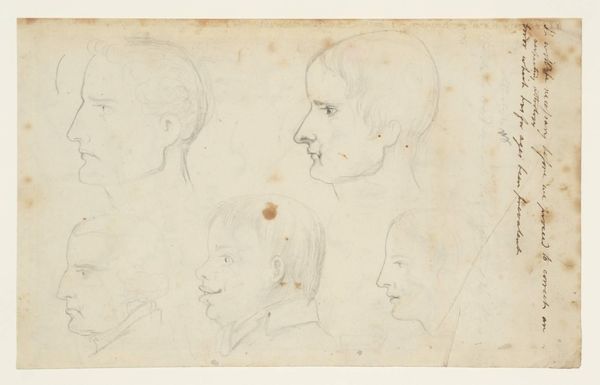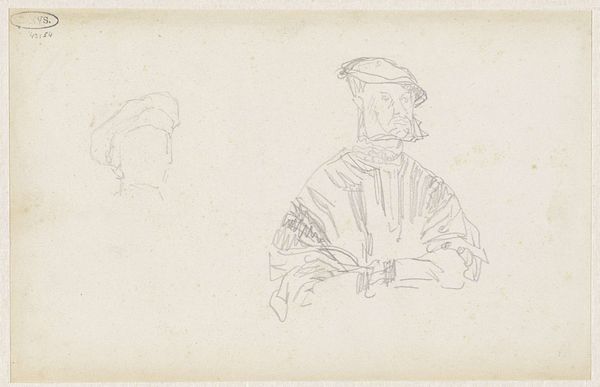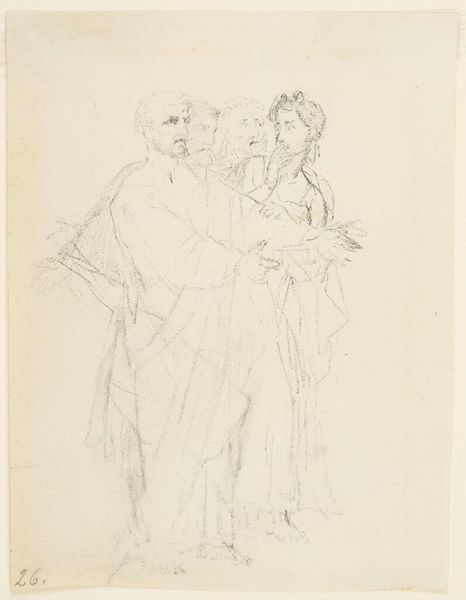
drawing, pencil
#
portrait
#
drawing
#
figuration
#
pencil
Dimensions: 233 mm (height) x 350 mm (width) (bladmaal)
Curator: Here we have Dankvart Dreyer's "Figurstudier," created sometime between 1831 and 1852. It's a pencil drawing currently held at the SMK, the Statens Museum for Kunst. Editor: It feels ephemeral. Almost as if the artist was trying to capture fleeting thoughts rather than concrete forms. The figures are barely there, ghost-like. Curator: Well, the material itself suggests process. The graphite pencil, readily available and relatively inexpensive, positions this as a study. Think of the availability of drawing materials for an artist at that time and it is a vital, cost-effective method. These studies most likely predate larger paintings or more finalized works. Editor: I see a hint of Hamlet in that central figure with the ruff collar, gazing with a somewhat pained expression. Or perhaps I am merely projecting the anxieties of a period grappling with modernity. What do you think of the visible pentimenti? Do you think there is something ghostly, psychological in that process? Curator: Absolutely! Those alterations tell us a lot. It’s all about economy and the artist reusing a piece of paper to test different figural ideas. The paper becomes a site of investigation; material is a valuable commodity for study, practice, and labor. And these compositional choices tell of resourcefulness as a material reality. Editor: But the composition – the gathering of faces, their unfinished quality… it almost suggests a communion with historical figures, a symbolic space where the past and present intertwine in the artist's imagination. They seem to haunt the page, don't you think? Curator: Maybe. Though I read the drawing primarily in terms of access, the pencil’s cost, and the artistic strategies within Danish artistic production in the 19th Century. Editor: In conclusion, the symbolism suggests to me an encounter, an artist speaking with phantoms from the past, seeking connection in times of enormous changes in artistic modes of expression and national identity, all visualized in its fragile form and use of figuration and line. Curator: And to me, its modest form factors, with all the economy of its material, make “Figurstudier” a great indicator of 19th-century labor and the creation of artwork within a clear material, financial, and labor focused paradigm.
Comments
No comments
Be the first to comment and join the conversation on the ultimate creative platform.

